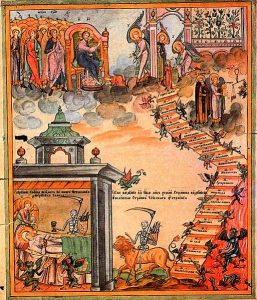 The doctrine of the aerial tollhouses (мытарства) is a traditional Orthodox teaching, especially preserved among the Old Believers, the Russian Orthodox Church, and also within Greek patristic sources. It concerns the soul’s journey after death, specifically its passage through a series of demonic “tollhouses” where the sins of the soul are tested and judged.
The doctrine of the aerial tollhouses (мытарства) is a traditional Orthodox teaching, especially preserved among the Old Believers, the Russian Orthodox Church, and also within Greek patristic sources. It concerns the soul’s journey after death, specifically its passage through a series of demonic “tollhouses” where the sins of the soul are tested and judged.
According to this teaching, immediately after death, the soul undergoes a forty-day journey. During this period, it encounters demonic spirits at various stations (the tollhouses), each one testing the soul regarding specific types of sins: slander, pride, greed, fornication, heresy, and so forth. If the soul has not repented of these sins and does not have the protection of its good deeds, prayers, and divine mercy, it risks being seized by demons and cast into Hades.